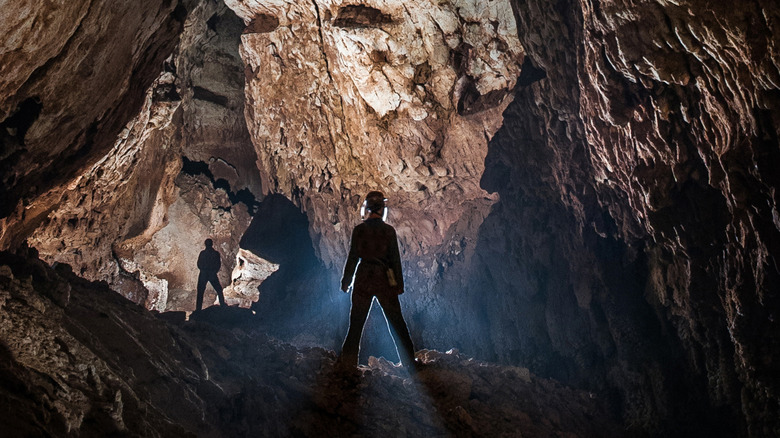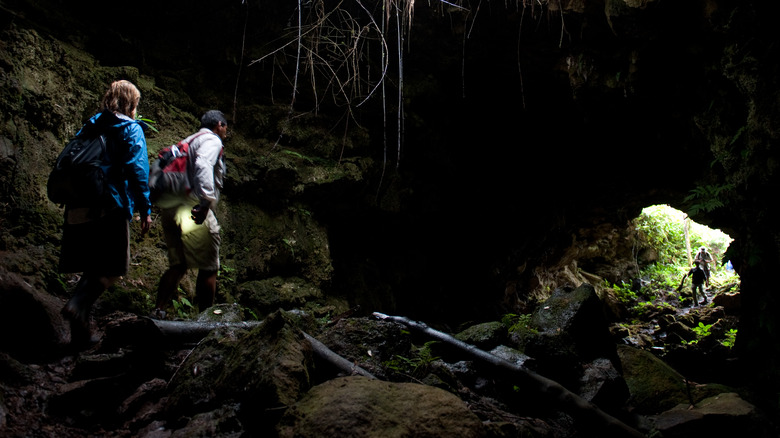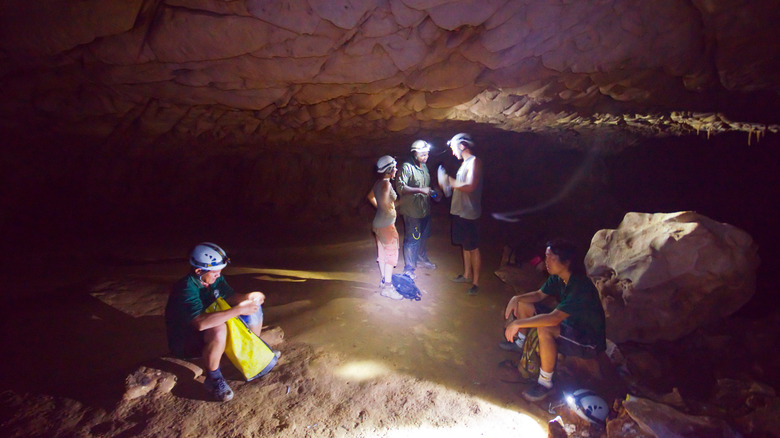The Safe Number Of People To Bring On Your Next Caving Adventure
Caving can be an incredible adventure into the depths of the earth. Using the same techniques as mountain climbers, caving enthusiasts simply go down instead of up, seeking out beautiful underground places that may not have been seen by human eyes for decades. Below, they find amazing rock formations, tight stone passages, enormous domed ceilings, hidden lakes and waterfalls, and an entire ecosystem untouched by humans.
Caving, also known as spelunking, can also be extremely dangerous if the underground explorers are unprepared, exhausted, inexperienced, or not taking their safety seriously. Slipping and falling, getting caught in a sudden flood, being struck by a falling object, or losing your way in the darkness are all potential hazards. One of the best things you can do to negate these risks is to have a good team with you. For the best and safest caving experience, you should have a team of 4-6 people.
Have the right size team
While one of the great joys of caving is getting to be among the first to see environments that have slowly developed over thousands of years, you never want to be the only one who sees them. One of the most critical ways to make sure that your journey into the cave is a safe one is to go with a team of appropriate size — and definitely never cave alone.
As described by the MIT Caving Club, the worst-case scenario is getting injured in a cave and having nobody there to go for help. Four is the smallest number of people who can safely go caving together. If one person is injured and unable to leave the cave on their own, one person can wait with them for help while the other two leave to get help. If there are less than four people, someone would have to be alone in the cave, which is never safe.
The USDA Forest Service advises a maximum of eight people, but many experienced cavers recommend teams of six or less. While it might seem like a larger group is always safer, bigger groups tend to be slower and difficult to keep track of — and the more people there are, the easier it is for one person to get left behind accidentally. If a larger group wants to explore the same cave at the same time, they can simply break up into a few appropriately sized groups.
Teamwork is everything under ground
The safety of a caving team relies on the communication between the cavers — which is easier with a reasonably sized group. Even before going into the cave, it's important for members of the team to discuss aspects of this particular cave, which might be challenging for them. Once inside, it's absolutely vital to stay within earshot of the rest of the team at all times so that everyone can stay in communication. As stated by the National Speleological Society's "A Guide to Responsible Caving," "Responsible cavers think and act as a unit underground to ensure a safe trip."
The pace of the group should be set by the slowest person so that they aren't accidentally left behind or pushed to dangerous levels of fatigue. When navigating obstacles, it's important to wait and make sure that the next person made it through safely. When going through tight spaces, an experienced and physically larger caver should always go first. If they can't make it through, a smaller member of the team can help them get back so the team can find another way.
It is also important to have a trusted person above ground who knows where the cave is and a set time when the group will be back. If they don't hear from any of the cavers by their estimated arrival time, they are responsible for calling for help.


